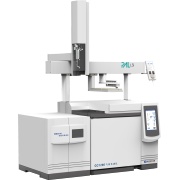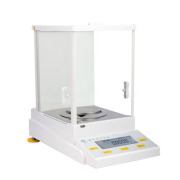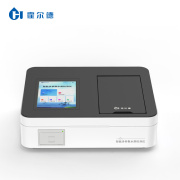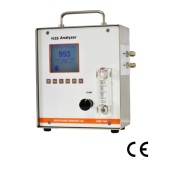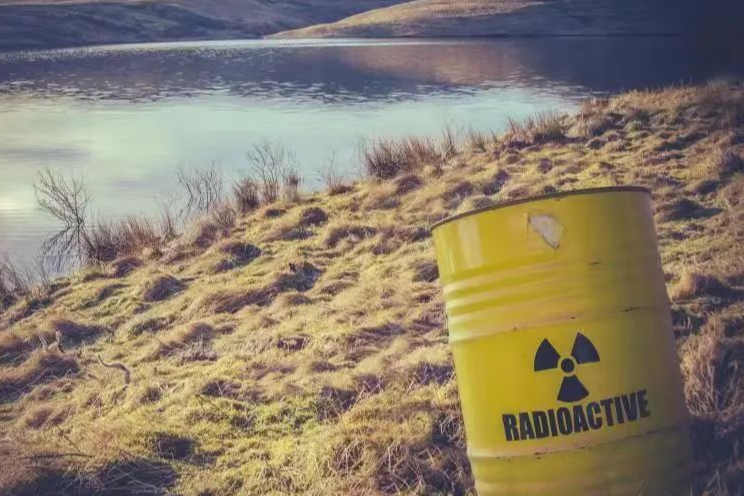V-Sorb 2800TP surface area and micropore system introduction
V-Sorb 2800TP, the best one surface area and pore size analyzer, is researched by Gold APP Instruments engineers for surface area and pore size, especially micropore testing. It equipped with our multi pioneered technologies these make its performance much better, heighten accuracy and consistence of results, enhance measurement stability, all these lead to a leading one among global competitors. Equipment designed from the user perspective and equipped with fully automated operation, user-friendly interface makes it easy to learn, imported accessories assure stability and prolong life. Perfect design, sophisticated production and strict testing guarantee to meet customers’ real demands. V-Sorb 2800TP with a TURBO MOLECULE PUMP which easily ensure your investment profits and flexible equipped peripheral can satisfy different clients requests.
V-Sorb 2800TP surface area and micropore system parameters
Analysis Method: static volumetric nitrogen adsorption principle
Versatility: Adsorption and desorption isotherms, Single and multi-point BET surface area, Langmuir surface area, Average particle diameter estimation, T-plot external surface area, True density analysis, BJH total pore volume and pore size distribution, T-plot micropore, MP method micropore, Horvath-Kawazoe (HK) micropore, Saito-Foley (SF) micropore, Dubinin-Radushkevich (DR) micropore, Dubinin-Astakhov (DA) micropore, carbon black (STSA) etc.
Vacuum System: V-Sorb unique stainless steel micro welding vacuum manifolds system, metal-to-metal (VCR) fittings, reduce dead space in maximum degree and also keep long duration high vacuum; the VCR metal fittings’ vacuum leak rate can reach 1x10-10 (Pa*m3/s), absolutely without usage of any O-ring sealing which will release gas to affect vacuum purity when under high vacuum condition
Vacuum Cavity: V-Sorb unique monolithic manifolds and solenoid valve control system, greatly reduce the dead volume; improve the adsorbate micro-change sensitivity; enhance pore size distribution analysis resolution; decrease connecting points; strengthen sealing performance and prolonged instrument life
Measuring Ranges: 0.01m2/g to no known upper limit(surface area), 0.35 to 2-500nm (pore size)
Accuracy: repeatability errors ≤1%
Coolant Level Prober: V-Sorb original coolant level control system with temperature probe, ensure the coolant level unchanged when compares with sample cells in the whole analysis process, completely eliminate the analysis errors caused by dead volume change
Data Acquisition: high-precision and high integration data acquisition and archiving system, minimal error, strong anti-interference ability
Sample Ports: two samples’ analyzing and two samples’ degassing concurrently
Control System: programmable solenoid valve system with high integration and strong anti-interference ability, enhance instrument’s stability and life
Pressure Measurement: imported sectional measuring dual pressure transducer, notably improve the measuring accuracy at low P/Po point, 0-1000Torr, 0-1Torr and 0-0.1Torr three transducers are equipped
Transducer Accuracy: imported silicon thin film pressure transducer, accuracy can reach 0.1% of real reading, better than 0.1% of F.S.(full-scale), far accurate than Pirani resistance vacuum gauge(general error is 10%-15%)
Vacuum Pump: built-in bipolar vacuum pump controlled by patented software which can auto control pump’s start/stop
Dewar Vessel: imported 4 liter metal made Dewar can provide at least 72 hours of unattended measurement without refilling the Dewar
Partial Pressure: P/Po controllable accuracy range is 5x10-6-0.998
Ultimate Vacuum: bipolar pump: 4x10-2Pa (3x10-4Torr), molecular pump: 5x10-6Pa
Sample Types: powders, particle, fiber, flakes and other materials
Adsorbate Gas: high purity nitrogen (≥99.999%), Ar, Kr, CO, CO2, C4H10 etc. non-corrosive gases are optional
Data Reduction: Windows®-based independent developed Gold APP softwareTM, perfect versatility, produced full featured and multi-model reports
V-Sorb 2800TP surface area and micropore system features
1. Stainless steel micro welding vacuum manifolds system can reduce the leak rate apparently, improve ultimate vacuum, without daily maintenance and enhance stability.
2. Micro welding vacuum system can decrease manifolds’ volume, increases measuring sensitivity and raise accuracy.
3. Imported with original packaging molecular pump, ultimate vacuum can reach 5x10-6-0.998, maintenance free, convenient to use, reduce latter utilization cost.
4. Micro welding vacuum system, high vacuum solenoid valve and high ultimate vacuum molecular pump unite perfectly, bring each accessories performance into full play, precision degree can reach until 5x10-8.
5. Imported high vacuum pneumatic valve's sealing performance is up to 5x10-12 (Pa﹡ m3/s), can completely remove analyzed gas temperature change caused by valve heat.
6. Fully metal-to-metal VCR connecting can eliminate O-ring self gas release problem when under high vacuum circumstance, efficiently improve ultimate vacuum and analysis reliability.
7. Imported high-precision silicon thin film capacitive transducer, the core part, can realize auto zero by software; the 1 Torr full-scale (F.S.) transducer assists micropore to achieve a more accuracy data for low P/Po points.
8. Modularity design can configure as customer requests, benefits future functions extension and instrument maintenance.
9. Programmable solenoid valve system with high integration and strong anti-interference ability, speed and easy for upgrade and maintenance.
10. Fully auto and modularity design, equipped with dedicated software, can realize unattended operation at night.
11. Multi calculating methods for data reduction provides all-round sample analysis options; powerful data archiving and searching system helps a lot for data management.
V-Sorb 2800TP surface area and micropore system application
1. Super micro powder, nanomaterials, particle and fiber shaped surface area analysis.
2. Product quality control for powder materials related corporations.
3. Research institutes, universities for BET theory teaching.
4. Full cells, catalysts, additives, adsorbent, ceramics, magnetic materials, energy storage materials etc.
5. Other researches concern surface area performance.
Contact info:
Web: / www.app-one.com.cn
Email:
Tel.: Ext.810
Fax:
Mobile:
IMs:
Skype: Gold-APP-Instruments
Yahoo:
Gtalk:
V-Sorb 2800TP, the best one surface area and pore size analyzer, is researched by Gold APP Instruments engineers for surface area and pore size, especially micropore testing. It equipped with our multi pioneered technologies these make its performance much better, heighten accuracy and consistence of results, enhance measurement stability, all these lead to a leading one among global competitors. Equipment designed from the user perspective and equipped with fully automated operation, user-friendly interface makes it easy to learn, imported accessories assure stability and prolong life. Perfect design, sophisticated production and strict testing guarantee to meet customers’ real demands. V-Sorb 2800TP with a TURBO MOLECULE PUMP which easily ensure your investment profits and flexible equipped peripheral can satisfy different clients requests.
V-Sorb 2800TP surface area and micropore system parameters
Analysis Method: static volumetric nitrogen adsorption principle
Versatility: Adsorption and desorption isotherms, Single and multi-point BET surface area, Langmuir surface area, Average particle diameter estimation, T-plot external surface area, True density analysis, BJH total pore volume and pore size distribution, T-plot micropore, MP method micropore, Horvath-Kawazoe (HK) micropore, Saito-Foley (SF) micropore, Dubinin-Radushkevich (DR) micropore, Dubinin-Astakhov (DA) micropore, carbon black (STSA) etc.
Vacuum System: V-Sorb unique stainless steel micro welding vacuum manifolds system, metal-to-metal (VCR) fittings, reduce dead space in maximum degree and also keep long duration high vacuum; the VCR metal fittings’ vacuum leak rate can reach 1x10-10 (Pa*m3/s), absolutely without usage of any O-ring sealing which will release gas to affect vacuum purity when under high vacuum condition
Vacuum Cavity: V-Sorb unique monolithic manifolds and solenoid valve control system, greatly reduce the dead volume; improve the adsorbate micro-change sensitivity; enhance pore size distribution analysis resolution; decrease connecting points; strengthen sealing performance and prolonged instrument life
Measuring Ranges: 0.01m2/g to no known upper limit(surface area), 0.35 to 2-500nm (pore size)
Accuracy: repeatability errors ≤1%
Coolant Level Prober: V-Sorb original coolant level control system with temperature probe, ensure the coolant level unchanged when compares with sample cells in the whole analysis process, completely eliminate the analysis errors caused by dead volume change
Data Acquisition: high-precision and high integration data acquisition and archiving system, minimal error, strong anti-interference ability
Sample Ports: two samples’ analyzing and two samples’ degassing concurrently
Control System: programmable solenoid valve system with high integration and strong anti-interference ability, enhance instrument’s stability and life
Pressure Measurement: imported sectional measuring dual pressure transducer, notably improve the measuring accuracy at low P/Po point, 0-1000Torr, 0-1Torr and 0-0.1Torr three transducers are equipped
Transducer Accuracy: imported silicon thin film pressure transducer, accuracy can reach 0.1% of real reading, better than 0.1% of F.S.(full-scale), far accurate than Pirani resistance vacuum gauge(general error is 10%-15%)
Vacuum Pump: built-in bipolar vacuum pump controlled by patented software which can auto control pump’s start/stop
Dewar Vessel: imported 4 liter metal made Dewar can provide at least 72 hours of unattended measurement without refilling the Dewar
Partial Pressure: P/Po controllable accuracy range is 5x10-6-0.998
Ultimate Vacuum: bipolar pump: 4x10-2Pa (3x10-4Torr), molecular pump: 5x10-6Pa
Sample Types: powders, particle, fiber, flakes and other materials
Adsorbate Gas: high purity nitrogen (≥99.999%), Ar, Kr, CO, CO2, C4H10 etc. non-corrosive gases are optional
Data Reduction: Windows®-based independent developed Gold APP softwareTM, perfect versatility, produced full featured and multi-model reports
V-Sorb 2800TP surface area and micropore system features
1. Stainless steel micro welding vacuum manifolds system can reduce the leak rate apparently, improve ultimate vacuum, without daily maintenance and enhance stability.
2. Micro welding vacuum system can decrease manifolds’ volume, increases measuring sensitivity and raise accuracy.
3. Imported with original packaging molecular pump, ultimate vacuum can reach 5x10-6-0.998, maintenance free, convenient to use, reduce latter utilization cost.
4. Micro welding vacuum system, high vacuum solenoid valve and high ultimate vacuum molecular pump unite perfectly, bring each accessories performance into full play, precision degree can reach until 5x10-8.
5. Imported high vacuum pneumatic valve's sealing performance is up to 5x10-12 (Pa﹡ m3/s), can completely remove analyzed gas temperature change caused by valve heat.
6. Fully metal-to-metal VCR connecting can eliminate O-ring self gas release problem when under high vacuum circumstance, efficiently improve ultimate vacuum and analysis reliability.
7. Imported high-precision silicon thin film capacitive transducer, the core part, can realize auto zero by software; the 1 Torr full-scale (F.S.) transducer assists micropore to achieve a more accuracy data for low P/Po points.
8. Modularity design can configure as customer requests, benefits future functions extension and instrument maintenance.
9. Programmable solenoid valve system with high integration and strong anti-interference ability, speed and easy for upgrade and maintenance.
10. Fully auto and modularity design, equipped with dedicated software, can realize unattended operation at night.
11. Multi calculating methods for data reduction provides all-round sample analysis options; powerful data archiving and searching system helps a lot for data management.
V-Sorb 2800TP surface area and micropore system application
1. Super micro powder, nanomaterials, particle and fiber shaped surface area analysis.
2. Product quality control for powder materials related corporations.
3. Research institutes, universities for BET theory teaching.
4. Full cells, catalysts, additives, adsorbent, ceramics, magnetic materials, energy storage materials etc.
5. Other researches concern surface area performance.
Contact info:
Web: / www.app-one.com.cn
Email:
Tel.: Ext.810
Fax:
Mobile:
IMs:
Skype: Gold-APP-Instruments
Yahoo:
Gtalk:
实验室配套设备V-Sorb 2800TP信息由北京国仪精测技术有限公司为您提供,如您想了解更多关于实验室配套设备V-Sorb 2800TP报价、型号、参数等信息,欢迎来电或留言咨询。
相关产品
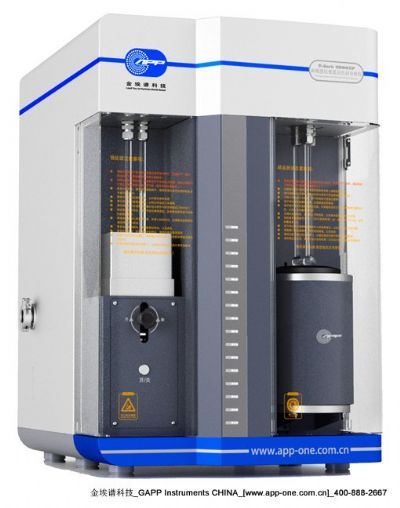
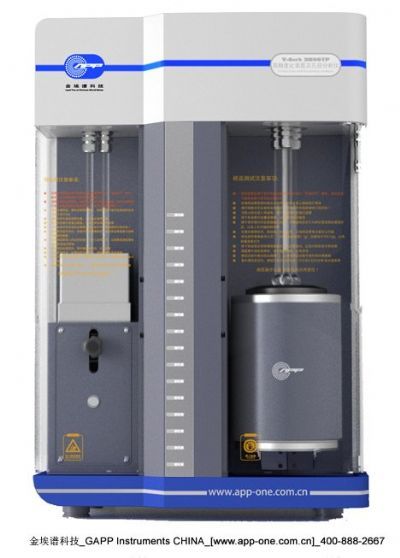
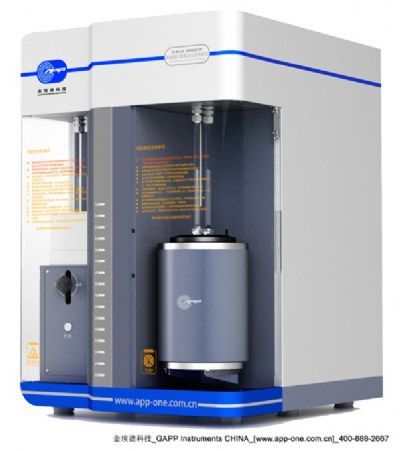
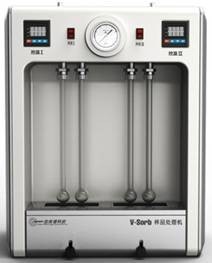



 仪器对比
仪器对比




 关注
关注
